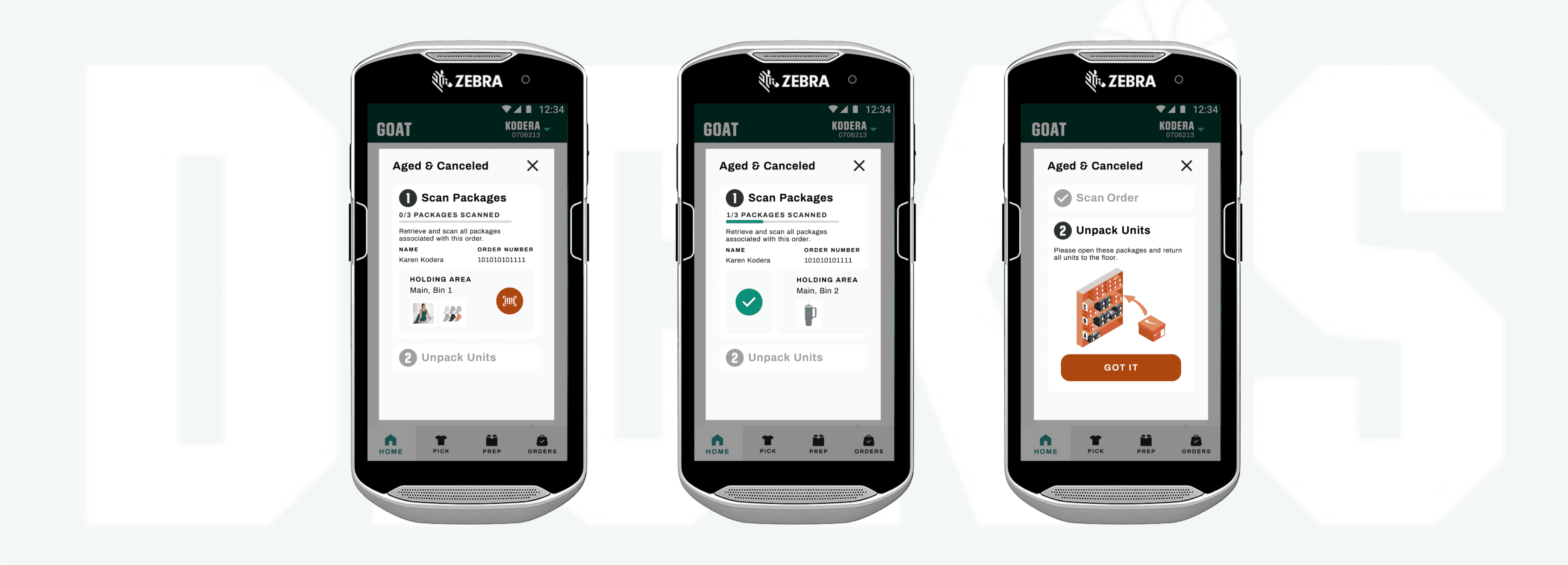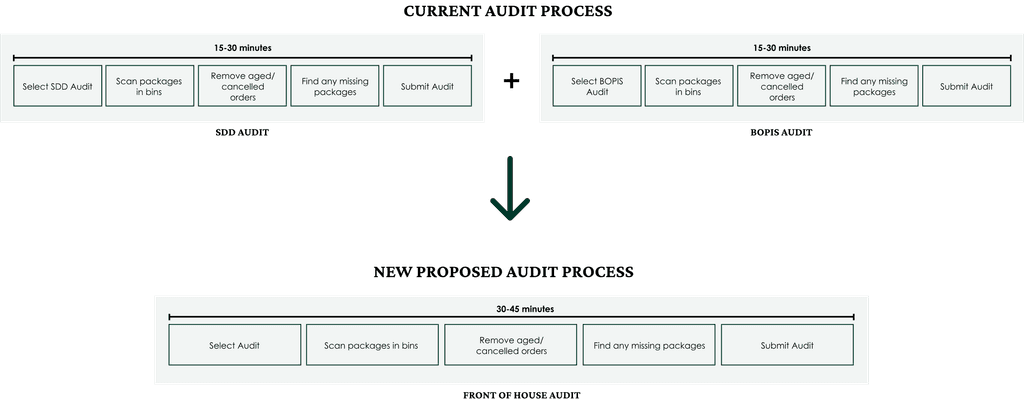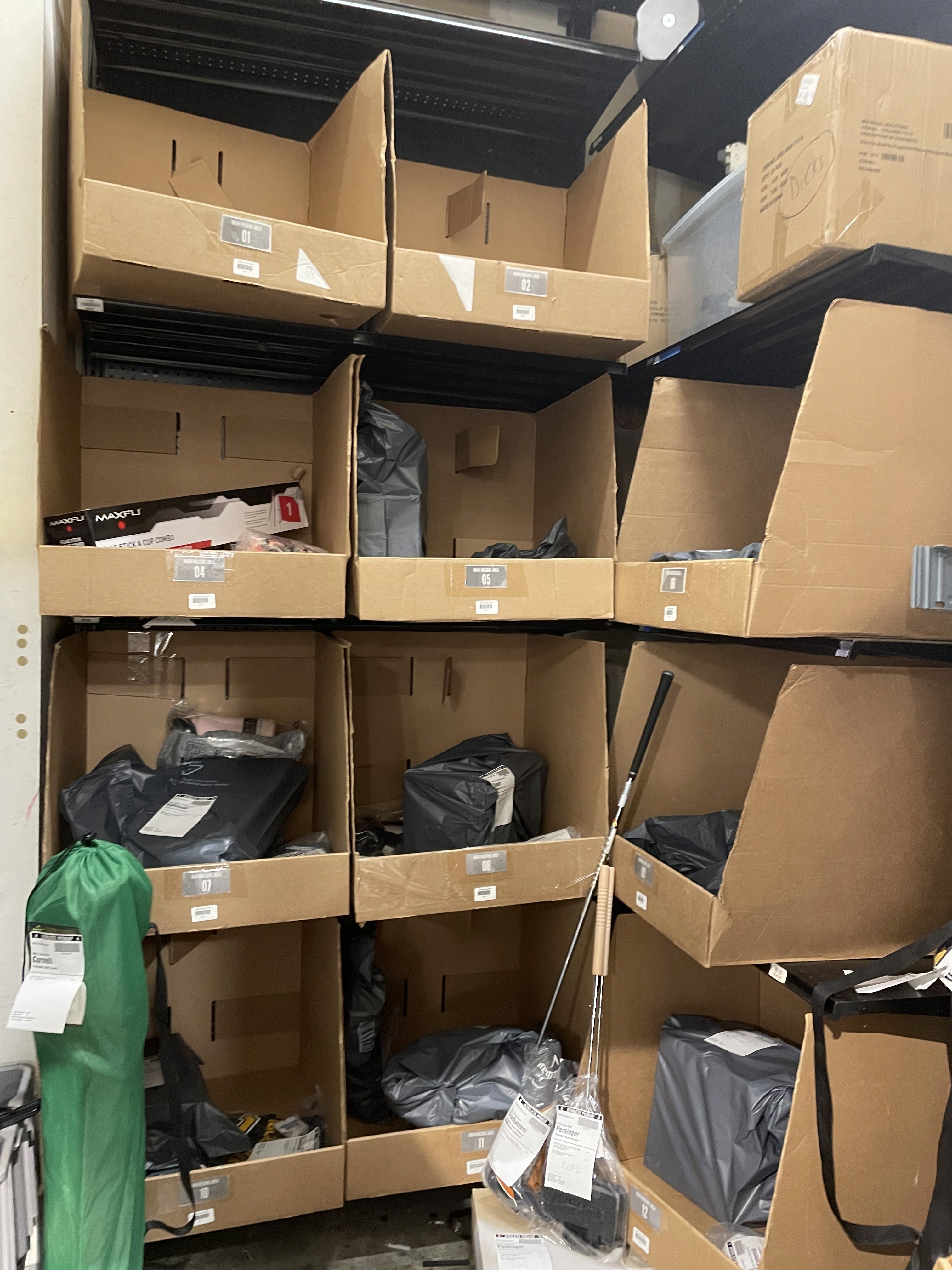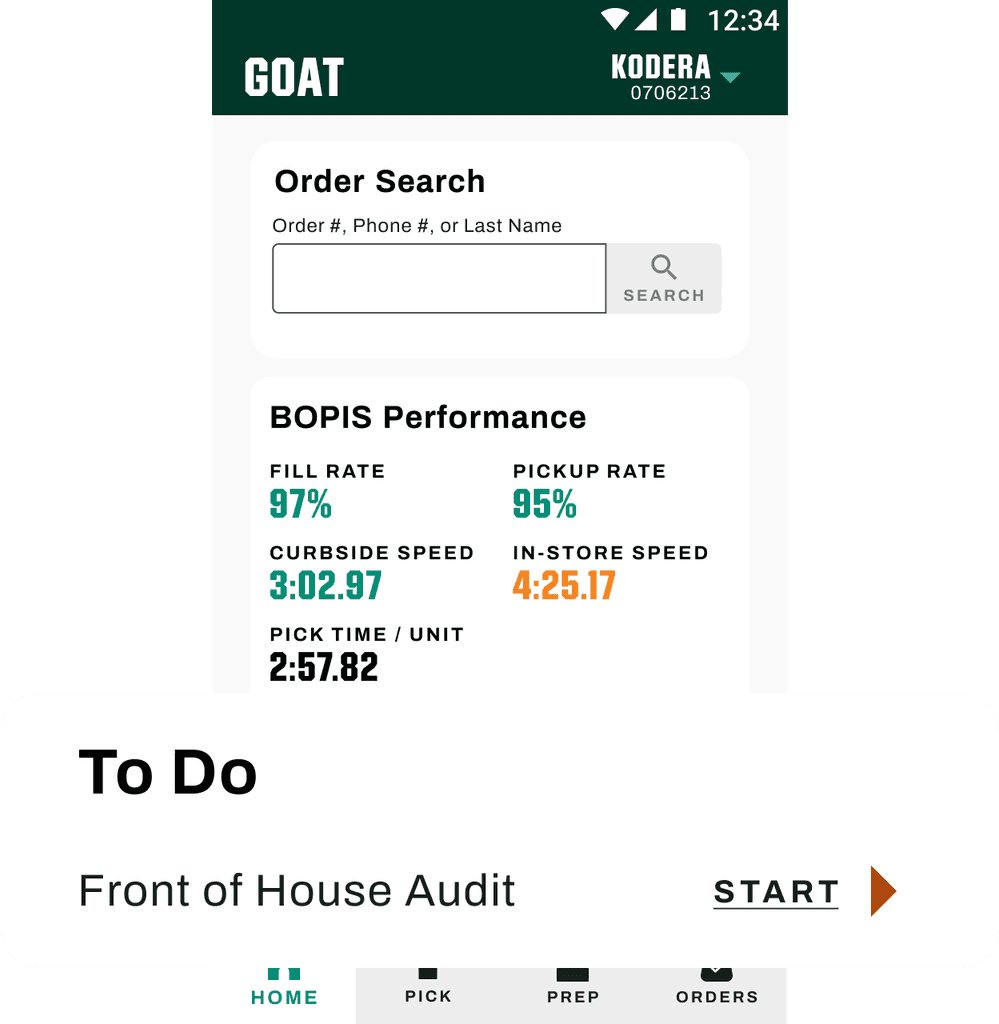
DICK's Sporting Goods
Saving time for Teammates through rethinking DICK's fulfillment audit process.

Responsibilities:
Product Designer
UX Research, Wireframing, User Testing, Prototyping
Tools:
Figma
Miro
Jiro
Duration:
May 2023 - Nov 2023
Summary:
Over the summer, I worked on the audit portion of Omnimobile, an app that handles preparing and delivering orders. It was an exciting time to work on this team since they were modernizing the whole application and I was handed full ownership over the audit screens.
CONTEXT
An audit is a process for checking order accuracy and location integrity of inline orders packed and stored in-store.
Teammates aka store workers scan each package and remove canceled/aged orders to keep holding areas accurate. BOPIS (Buy online pickup in store) and SDD (Same day delivery) orders are kept in holding areas together at the front of the store.
PROBLEM
BOPIS and SDD audits are two separate processes that happen at different times and intervals, but have the same basic function: to check on order storage. There is opportunity to make the structure more efficient and less redundant.
First, I worked in-store alongside Teammates and interviewed them to understand the audit process. I quickly realized that it was a repetitive process and combining the two into one and would significantly save time for associates.

UNDERSTANDING BUSINESS NEEDS
Next, I interviewed stakeholders to understand their expectations in audit.
I talked to leaders on eComm, Loss Prevention, Athlete Order Management and Store Ops teams. Stakeholders were excited since creating a quicker audit process, would mean teammates would have time for other tasks such as interacting with consumers, Athletes, leading to higher profits for the company.
USABILITY TESTING
I designed my first wireframes based off these goals and then, traveled with my team to conduct usability testing in stores.
I went to Atlanta, Columbus and Pittsburgh, hitting 3-4 stores in each location. I learned that the current process was outdated. I noticed different workarounds being used at stores that lead me to make changes to the design. The designs were primal and there was opportunity to show hierarchy and give feedback to teammates to make the app easier for new teammates.
SOLUTION
INTRODUCING The Front of House Audit
An agnostic audit process that combines the BOPIS and SDD flows into one, saving time for teammates.
CHANGE #1:
BIN BY BIN SCANNING
BEFORE:
The original screens were list-heavy. The lack of hierarchy makes it difficult to understand information on page.

AFTER:
The orders have been broken down location by location to decrease lost orders.

BEFORE:
Teammates don't know to set aside orders unless they look at their screen and see the notification.

AFTER:
Orders to set aside are glued to the top of the list in yellow so it is easy to differentiate from regular orders.

CHANGE #2:
CLEAR AUDIT ORDER HIERARCHY
CHANGE #3:
FEEDBACK WHEN TASKS ARE COMPLETED
BEFORE:
Teammates have to manually submit audits requiring them to check their screens to see when orders have been audited.

AFTER:
Automated process allows teammates to quickly move through audits, saving time.

CONCLUSION
This was my first internship in UX design, working under designers with formal training allowed me to pick up so much through observation and one on one interaction.
I learned that important insights aren't always clear immediately. Often times, they require several rounds of research and affinity mapping over and over again until patterns become clear. User testing is so important and what you thought will work the first time isn't always the best solution. What an exciting time of modernization to be apart of the Fulfillment team. I look forward to taking the skills learned from this internship into projects in the future.



